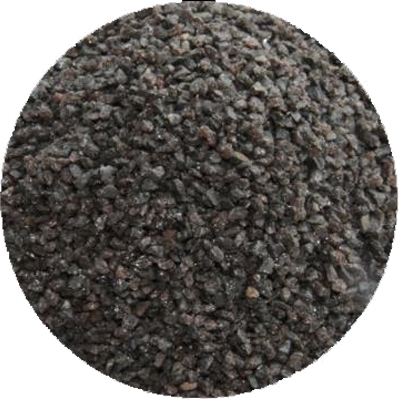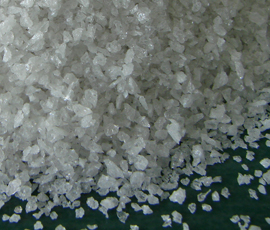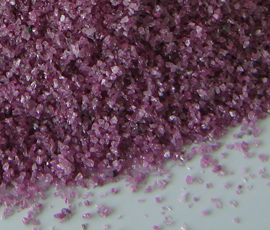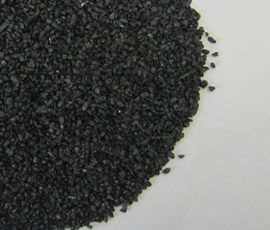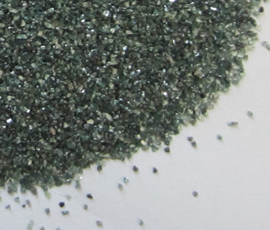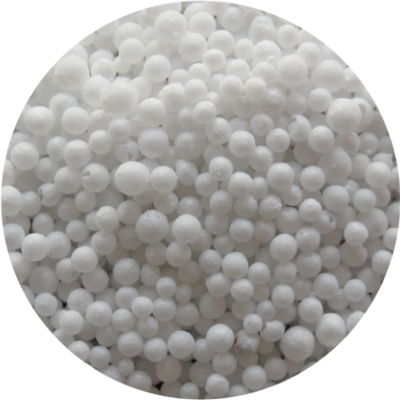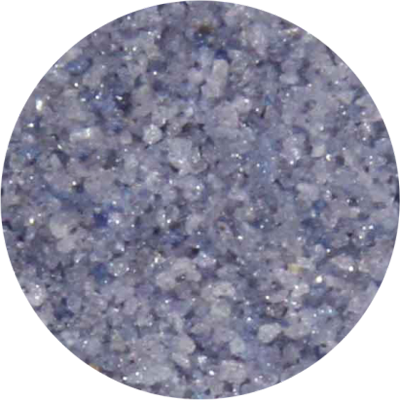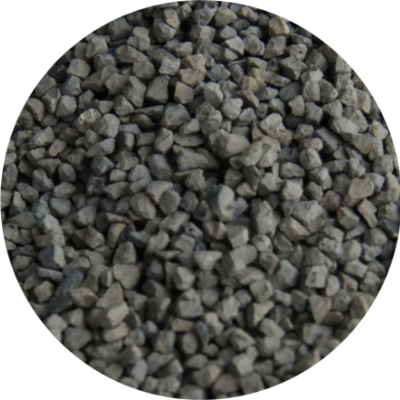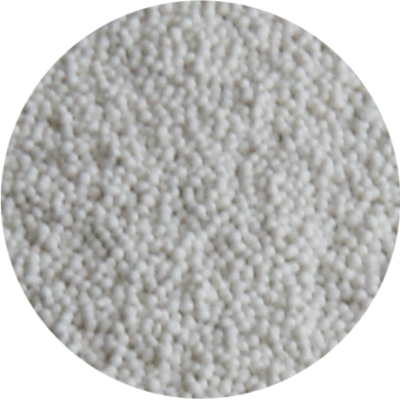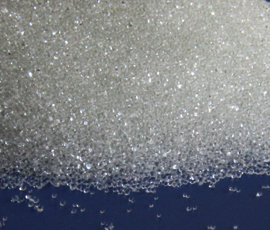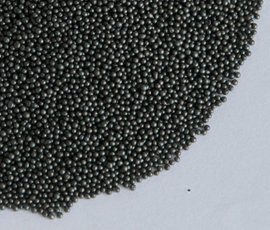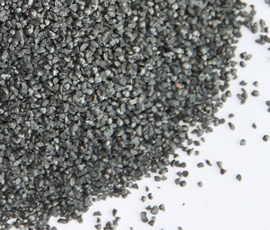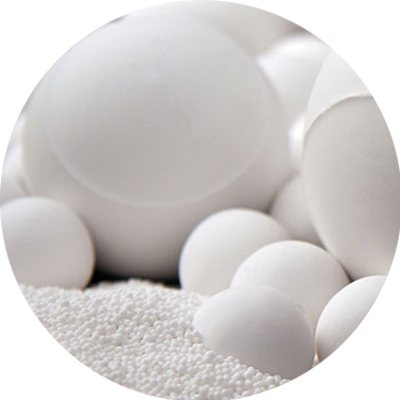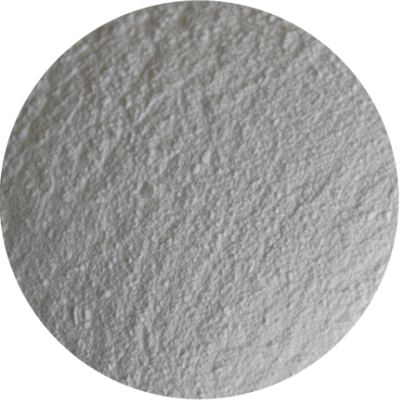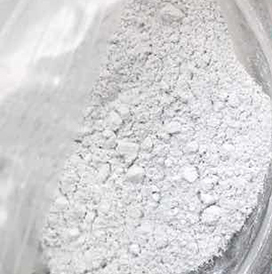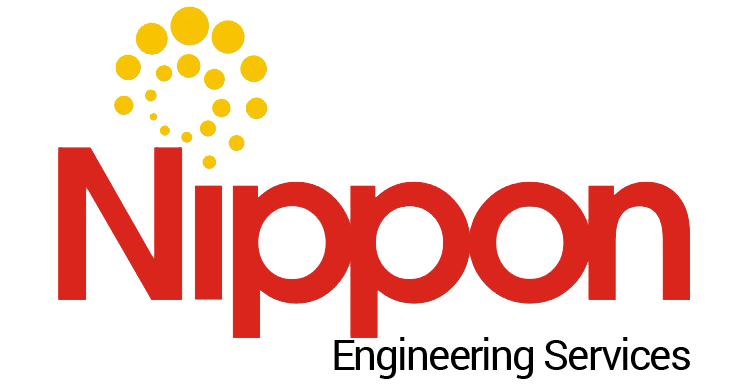
Our Brands
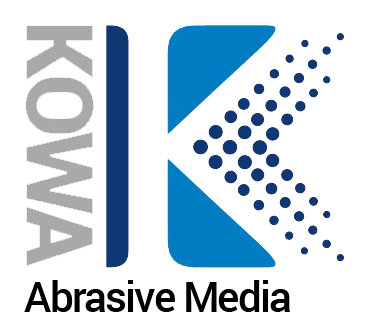
Product List
Brown Aluminum Oxide (BFA) is produced by the fusion of high-quality bauxite in an electric arc furnace at high temperatures. Our Brown Aluminum Oxide has high compression strength, high toughness, excellent self-sharpening, low coefficient of thermal expansion, and excellent hydrophilia and cleanliness.
APPLICATIONS
Bonded and Coated Abrasives: A vital component in production of standard and vitrified resin-bonded cutting and grinding wheels as well as coated abrasives such as sandpaper and sanding cloth. Can be used to cut steel, cast iron, and nonferrous metals such as bronze.
Surface Preparation: Widely used as a durable and cost-effective medium in processes such as blasting, descaling, etching, deburring, removal of paints and coatings, cleaning, and metal finishing.
Flooring: Due to its hardness and wear-resistance, used to achieve durable non-skid textures in resinous flooring systems.
BROWN FUSED ALUMINA - Abrasive
CHEMICAL COMPOSITION
| Specifications | Al2O3 | SiO2 | Fe2O3 | TiO2 |
| BFA-Resin | 95.0 ± 0.5 % | ≤ 1.5% | ≤ 0.30% | 2.0~3.5% |
| BFA-Vitrified | 95.5 ± 0.5 % | ≤ 1.0% | ≤ 0.20% | 2.2~3.5% |
PHYSICAL PROPERTIES
| Principal Crystalline Phase | α-Al2O3 |
| Crystal Color | Brown |
| True Specific Gravity | ≥ 3.90 g/cm³ |
| Mohs hardness | ≥ 9.00 |
| Micro Hardness | HV1800-2200 |
| Grinding Ability | ≥ 0.10 |
GRITS AVAILABLE
F12 to F220, P12 to P220, #240 to #4000
In accordance with the current GB / FEPA / JIS / ANSI sieve standards.
BROWN FUSED ALUMINA - Refactory
CHEMICAL COMPOSITION
| Index | Fixed furnace | Tilting furnace |
| Al2O3 | ≥ 94% | ≥ 95% |
| Fe2O3 | ≤ 0.3% | ≤ 0.2% |
| SiO2 | ≤ 1.5% | ≤ 1.0% |
| TiO2 | ≤ 3.5% | ≤ 3.0% |
PHYSICAL PROPERTIES
| Crystal Color | Brown |
| Refractoriness | 1980°C min |
| Melting Temperature | 2050°C min |
| True Specific Gravity | 3.90 g/cm³ min |
| Mohs Hardness | 9.00 min |
GRITS AVAILABLE
mm: 0-0.5, 0-1, 1-3, 3-5, 5-8,0-3,0-5, 0-10, 0-25
Mesh: -100, -200, -325
Other sizes available on request.
| Name | Technical Data Sheet | Material Safety Sheet |
| Bonded | ||
| Vitified Bondend | ||
| Coated | ||
| Calcined-Heat treated | ||
| High temp calcines | ||
| Ceramic coated | ||
| 92% | ||
| 85% | ||
| Refractory |
White Aluminum Oxide is an angular abrasive that is one of the hardest minerals available. It is created by the fusion of high-purity alumina powder in an electric arc furnace at high temperatures. It can be produced in a wide array of sizes, from large grains to micro-powders, and is ideal for many product applications.
APPLICATIONS
Bonded abrasives: Such as grinding wheels, cutting wheels, and cutting discs.
Coated abrasives: Such as sandpaper and sanding belts.
Blasting media: For cleaning, removal and surface treatment of metal and non-metal products.
Lapping and polishing: Powders used in products and processes for precision finishing of metals, glass and other products.
Flooring: Powders add durability and scratch-resistance to laminated hardwood flooring and floor tiles, and large grains add durable non-skid texture to resinous flooring systems.
White Fused Alumina - Refactory
CHEMICAL COMPOSITION
| Specifications | Al2O3 | SiO2 | Fe2O3 | Na2O |
| mm: 0-0.5, 0-1, 1-3, 3-5 | ≥ 99% | ≤ 0.1% | ≤ 0.1% | ≤ 0.4% |
| Mesh: -100, -200, -325 | ≥ 98.5% | ≤ 0.1% | ≤ 0.1% | ≤ 0.4% |
GRITS AVAILABLE
mm:0-0.5,0-1,1-3,3-5
Mesh: -100, -200, -325 .
Other sizes available on request.
PHYSICAL PROPERTIES
| Principal Crystalline Phase | α-Al2O3 |
| Color | Brilliant White |
| Shape | Angular and Sharp |
| Mohs Hardness | ≥ 9 |
| Melting Temperature | 2250°C |
| Refractory Temperature | 1900°C |
| True Density | ≥ 3.50 g/cm³ |
White Fused Alumina - Abrasives
CHEMICAL COMPOSITION
| Specifications | Al2O3 | Na2O |
| F4 - F80 | ≥ 99% | ≤ 0.35 |
| P12 - P80 | ≥ 99% | ≤ 0.35 |
| F90 - F150 | ≥ 99% | ≤ 0.40 |
| P100 - P150 | ≥ 99% | ≤ 0.40 |
| F180 - F220 | ≥ 98.60 | ≤ 0.50 |
| P180 - P220 | ≥ 98.60 | ≤ 0.50 |
| F230 - F800 | ≥ 98.30 | ≤ 0.60 |
| P240 - P800 | ≥ 98.30 | ≤ 0.60 |
| F1000 - F1200 | ≥ 98.10 | ≤ 0.70 |
| P1000 - P1200 | ≥ 98.10 | ≤ 0.70 |
| P1500 - P2500 | ≥ 97.50 | ≤ 0.90 |
GRITS AVAILABLE
F4 to F220, F230 to F1200, P12 to P220, P240 to P2500, JIS240 to JIS4000
In accordance with the current FEPA / JIS / ANSI sieve standards.
PHYSICAL PROPERTIES
| Principal Crystalline Phase | α-Al2O3 |
| Color | Brilliant White |
| Shape | Cubic and Angular and Sharp |
| Crystal Size | 600μm - 1400μm |
| True Specific Gravity | ≥ 3.9 g/cm³ |
| Bulk Density | 1.5 - 1.95 g/cm³ |
| Knoop Hardness | 2200 - 2300 kg/mm2 |
| Mohs Hardness | ≥ 9.00 |
| Refractoriness | ≥ 1850°C min |
| Name | Technical Data Sheet | Material Safety Sheet |
| abrasives | ||
| Refractory |
Pink Aluminum Oxide (PA) is fused from high-purity alumina powder, chromium and other materials in an electric arc furnace at very high temperatures. The inclusion of chromium gives Pink Aluminum Oxide not only its characteristic pink or ruby color, but also even greater hardness and toughness than White Aluminum Oxide. Pink Aluminum Oxide has sharp edges and extraordinary durability, and is available in sizes ranging from large grains to micro-powders.
APPLICATIONS
Abrasives: For production of grinding tools that deliver outstanding durability and fine surface finishes, and especially for precision grinding applications for hard alloy steels and other metals.
Blasting: For any application in which an iron-free and aggressive blasting medium is required.
Metal finishing: For a wide array of products ranging from small threaded products to precision measuring instruments to large engine crankshafts.
CHEMICAL COMPOSITION
| Specifications | Low Chromium (%) | Medium Chromium (%) | High Chromium (%) | ||||||
| Al2O3 ≥ | Cr2O3 | Na2O ≤ | Al2O3 ≥ | Cr2O3 | Na2O ≤ | Al2O3 ≥ | Cr2O3 | Na2O ≤ | |
| F12 - F80 | 98.5 | 0.20 - 0.45 | 0.50 | 98.2 | 0.45- 1.00 | 0.55 | 97.4 | 1.00- 2.00 | 0.55 |
| F90 - F150 | 98.5 | 0.20 - 0.45 | 0.55 | 98.2 | 0.45- 1.00 | 0.60 | 97.0 | 1.00- 2.00 | 0.60 |
| F180 - F220 | 98.9 | 0.20 - 0.45 | 0.60 | 97.8 | 0.45- 1.00 | 0.70 | 96.5 | 1.00- 2.00 | 0.70 |
PHYSICAL PROPERTIES
| Basic Minerals | Crystal Size μm | True Density g/cm3 | Bulk Density g/cm3 | Knoop Hardness Kg/mm2 |
| α-Al2O3 | 600 - 800 | ≥ 3.90 | 1.40 - 1.91 | 2200 - 2300 |
GRITS AVAILABLE
F12 to F220; P16 to P220; #240 to #4000
In accordance with the current FEPA / JIS / ANSI sieve standards.
| Name | Technical Data Sheet | Material Safety Sheet |
| Low Chromium | ||
| Medium Chromium | ||
| High Chromium |
Black Aluminum Oxide is an abrasive that is one of the hardest minerals available. It is created through the electrofusion of Bauxite, Iron Oxide and micro-elements in a tilting arc furnace. Black Aluminum Oxide can be produced in a variety of sizes from grains to micro-powders, and is one of the most economical media available for a wide array of dry and wet processing applications.
APPLICATIONS
Grinding and cutting wheels: Combining black aluminum oxide with brown aluminum oxide in resinous grinding wheels can improve their durability, extend their work life, and improve their cost-of-use.
Sandblasting: Used as blasting media for cleaning and surface preparation of large metal structures such as ship hulls and pipelines, as well as for stainless steel, fabricated metal products, optical glass, and bamboo products.
Polishing and Lapping: Polishing metal products such as tableware and other stainless steel products, and lapping of metal products.
Pavement / Flooring: Adds wear-resistance, durability and non-skid features to pavement, bridges and resinous flooring systems.
PHYSICAL PROPERTIES
| Specification | Al2O3 | Fe2O3 | SiO2 |
| BA – I | 73 - 83% | 9 - 11% | ≤ 8% |
| BA – II | 63 - 73% | 10 - 12% | ≤ 10% |
GRITS AVAILABLE
F12 to F220, P12 to P220, #240 to #4000
In accordance with the current GB / FEPA / JIS / ANSI sieve standards. Other sizes available on request.
| Name | Technical Data Sheet | Material Safety Sheet |
| Black Aluminum Oxide |
Green Silicon Carbide (SiC) is the product of silica quartz sand and petroleum coke electrofused at high temperature in an arc furnace. The sharp, blocky grains of Green Silicon Carbide are highly pure and have extreme hardness (Mohs 9.4 / Knoop 2600), strong cutting capacity, stable chemical properties, excellent thermal conductivity, and high strength at high temperatures.
APPLICATIONS
Abrasives: Used in the manufacture of bonded and coated abrasive products.
Grinding: Particularly for non-ferrous metals and other tough, hard materials.
Blasting: Particularly for very hard surfaces, removal of heavy rust, and fast etching of glass and stone.
Lapping and Polishing: For surface treatment of metals, stone, glass and ceramics, among others.
Automobile Parts: Used to produce extremely heat-tolerant parts, such as brake pads for high-performance automobiles.
Roadways and Flooring: Used to add slip-resistance to pavement and industrial flooring.
BLACK SILICON CARBIDE
CHEMICAL COMPOSITION
| Specifications | SIC | Free C | Fe2O3 |
| #12 - #90 | ≥ 98.50% | ≤ 0.2% | ≤ 0.2% |
| #100 - #180 | ≥ 98.00% | ≤ 0.3% | ≤ 0.3% |
| #220 | ≥ 97.50% | ≤ 0.3 - 0.6% | ≤ 0.3 -0.6% |
BLACK SILICON CARBIDE MICRO-POWDER
| Chemical Index (%) | Physical Index | |||||
| Grains | SiC | Free C | Fe2O3 | pH value | Bulk Density | Magnetic |
| #240 | ≥ 98.50 | ≤ 0.18 | ≤ 0.19 | 6 - 7.5 | 1.26 | 0.010 |
| #280 | ≥ 98.50 | ≤ 0.18 | ≤ 0.19 | 6 - 7.5 | 1.26 | 0.010 |
| #320 | ≥ 98.50 | ≤ 0.18 | ≤ 0.19 | 6 - 7.5 | 1.23 | 0.010 |
| #400 | ≥ 98.00 | ≤ 0.18 | ≤ 0.19 | 6 - 7.5 | 1.20 | 0.015 |
| #500 | ≥ 98.00 | ≤ 0.20 | ≤ 0.20 | 6 - 7.5 | 1.20 | 0.015 |
| #600 | ≥ 98.00 | ≤ 0.20 | ≤ 0.20 | 6 - 7.5 | 1.20 | 0.015 |
| #800 | ≥ 98.00 | ≤ 0.20 | ≤ 0.20 | 6 - 7.5 | 1.18 | 0.008 |
| #1000 | ≥ 98.00 | ≤ 0.20 | ≤ 0.20 | 6 - 7.5 | 1.15 | 0.008 |
| #1200 | ≥ 98.00 | ≤ 0.20 | ≤ 0.20 | 6 - 7.5 | 1.13 | 0.005 |
| #1500 | ≥ 98.00 | ≤ 0.20 | ≤ 0.20 | 6 - 7.5 | 1.12 | 0.005 |
| #2000 | ≥ 97.50 | ≤ 0.20 | ≤ 0.20 | 6 - 7.5 | 1.00 | 0.005 |
GRITS AVAILABLE
F12 to F220; P16-P220; #240 to #4000
In accordance with the current FEPA / JIS / ANSI sieve standards.
GRANULARITY DISTRIBUTION
| Grains | D0 < | D3 < | D50 | D94 > |
| #240 | 120.0 | 100.0 | 57.0 ± 3.0 | 40.0 |
| #280 | 110.0 | 80.0 | 48.0 ± 3.0 | 33.0 |
| #320 | 95.0 | 70.0 | 40.0 ± 2.5 | 27.0 |
| #400 | 70.0 | 55.0 | 30.0 ± 2.0 | 20.0 |
| #500 | 60.0 | 48.0 | 25.0 ± 2.0 | 16.0 |
| #600 | 50.0 | 38.0 | 20.0 ± 1.5 | 13.0 |
| #800 | 30.0 | 20.0 | 14.0 ± 1.0 | 9.0 |
| #1000 | 25.0 | 19.0 | 11.5 ± 1.0 | 7.0 |
| #1200 | 20.0 | 18.0 | 9.5 ± 1.0 | 5.5 |
| #1500 | 19.0 | 17.0 | 8.0 ± 0.6 | 4.5 |
| #2000 | 17.0 | 15.0 | 6.7 ± 0.6 | 4.0 |
GREEN SILICON CARBIDE
CHEMICAL COMPOSITION
| Specifications | SIC≥% | Free C≤% | Fe2O3≤% |
| #12 - #90 | 99 | 0.2 | 0.2 |
| #100 - #180 | 98.50 | 0.3 | 0.3 |
| #220 | 98.00 | 0.3 - 0.6 | 0.3 -0.6 |
GREEN SILICON CARBIDE MICRO-POWDE
| Chemical Index (%) | Physical Index | |||||
| Grains | SiC ≥% | Free C ≤% | Fe2O3 ≤% | pH value | Bulk Density | Magnetic |
| #240 | 99.00 | 0.13 | 0.13 | 6 - 7.5 | 1.25 | 0.01 |
| #280 | 99.00 | 0.13 | 0.13 | 6 - 7.5 | 1.23 | 0.01 |
| #320 | 99.00 | 0.12 | 0.12 | 6 - 7.5 | 1.23 | 0.01 |
| #360 | 99.00 | 0.12 | 0.12 | 6 - 7.5 | 1.20 | 0.009 |
| #400 | 99.00 | 0.13 | 0.13 | 6 - 7.5 | 1.20 | 0.009 |
| #600 | 99.00 | 0.13 | 0.13 | 6 - 7.5 | 1.18 | 0.008 |
| #800 | 99.00 | 0.12 | 0.12 | 6 - 7.5 | 1.18 | 0.008 |
| #1000 | 99.00 | 0.12 | 0.12 | 6 - 7.5 | 1.15 | 0.005 |
| #1200 | 99.00 | 0.15 | 0.13 | 6 - 7.5 | 1.13 | 0.005 |
| #1500 | 99.00 | 0.15 | 0.13 | 6 - 7.5 | 1.12 | 0.005 |
| #2000 | 99.00 | 0.14 | 0.15 | 6 - 7.5 | 1.00 | 0.005 |
| #2500 | 98.00 | 0.30 | 0.30 | 6 - 7.5 | 1.00 | 0.007 |
| #3000 | 97.00 | 0.35 | 0.30 | 6 - 7.5 | 0.92 | 0.007 |
| #4000 | 97.00 | 0.35 | 0.30 | 6 - 7.5 | 0.92 | 0.007 |
| #6000 | 97.00 | 0.25 | 0.30 | 6 - 7.5 | 0.90 | 0.007 |
GRITS AVAILABLE
F12 to F220; #240 to #6000
In accordance with the current FEPA / JIS/ ANSI sieve standards.
GRANULARITY DISTRIBUTION
| Grains | D0 < | D3 < | D50 | D94 > |
| #240 | 120.0 | 100.0 | 57.0 ± 3.0 | 40.0 |
| #280 | 110.0 | 80.0 | 48.0 ± 3.0 | 33.0 |
| #320 | 95.0 | 70.0 | 40.0 ± 2.5 | 27.0 |
| #400 | 70.0 | 55.0 | 30.0 ± 2.0 | 20.0 |
| #500 | 60.0 | 48.0 | 25.0 ± 2.0 | 16.0 |
| #600 | 50.0 | 38.0 | 20.0 ± 1.5 | 13.0 |
| #800 | 30.0 | 20.0 | 14.0 ± 1.0 | 9.0 |
| #1000 | 25.0 | 19.0 | 11.5 ± 1.0 | 7.0 |
| #1200 | 20.0 | 18.0 | 9.5 ± 1.0 | 5.5 |
| #1500 | 19.0 | 17.0 | 8.0 ± 0.6 | 4.5 |
| #2000 | 17.0 | 15.0 | 6.7 ± 0.6 | 4.0 |
| #2500 | 15.0 | 13.0 | 5.5 ± 0.5 | 3.0 |
| #3000 | 13.0 | 11.0 | 4.0 ± 0.5 | 2.0 |
| #4000 | 11.0 | 8.0 | 3.0 ± 0.4 | 1.3 |
| #6000 | 8.0 | 5.0 | 2.0 ± 0.4 | 0.8 |
| Name | Technical Data Sheet | Material Safety Sheet |
| Black Silicon Carbide | ||
| Green Silicon Carbide |
Bubble Alumina is produced from high-purity alumina in an electric arc furnace. Once melted, the alumina is atomized with compressed air, which produces hollow spheres. The melting point of Bubble Alumina is approximately 2100ºC. The hollow spheres are chemically inert and have very low bulk density, extremely low thermal conductivity, high hardness, high wear- resistance, and superior insulating properties.
APPLICATIONS
Bubble Alumina is used to produce lightweight insulating refractories and loose-fill refractories in which low thermal conductivity and extreme temperature resistance are prime requirements. It is also used, for example, as a bed in the firing process of vitrified grinding wheels and to create pores in high-porosity abrasives.
PHYSICAL PROPERTIES
| Al2O3 | ≥ 95% |
| SiO2 | ≤ 0.2% |
| Fe2O3 | ≤ 0.1% |
| Na2O | ≤ 0.4% /td> |
| Packing density | 0.5-1.0 g/cm3 |
| Damaged rate | ≤ 15% |
| Refractoriness | 1800°C |
| Particle size | Ф mm: 0-0.2, 0.2-1, 1-3, 3-5 |
| Test standard | GB/T3044-89 |
| Packing | 20kg/plastic bag, or as required |
SIZES AVAILABLE
mm: 0-0.2, 0.2-1, 1-3, 3-5
*Other sizes available on request.
| Name | Technical Data Sheet | Material Safety Sheet |
| Bubble Alumina |
Single Crystal Aluminum Oxide is produced in a unique process in which particles of various sizes are formed naturally during production, without the need for mechanical crushing. Single Crystal Aluminum Oxide is light blue in color (when fired between 300°C and 1280°C) and it has the advantages of extremely high hardness, sharp multi-prism cutting edges, stable bulk density, and excellent grinding performance with relatively low heat-generation.
APPLICATIONS
Grinding and Cutting Wheels: Used in the manufacture of rust-free vitrified, resin- bonded and rubber-bonded wheels that are perfect for grinding or cutting high hardness, high toughness metals such as heat-resistant alloy steel, titanium alloy steel, austenitic stainless steel, decorative stainless steel, or other easily burned work pieces.
CHEMICAL COMPOSITION
| Al2O3 | SiO2 | TiO2 | Fe2O3 |
| ≥ 99.20 | ≤ 0.07 | ≤ 0.45 | ≤ 0.08 |
GRITS AVAILABLE
F12 to F220; P16 to P220
In accordance with the currentFEPA/JIS/ANSI sievestandards.
PHYSICAL PROPERTIES
| Monocrystal | ≥ 95% |
| Crystal Color | Light Blue |
| True Specific Gravity | ≥ 3.95 g/cm³ |
| Bulk Density (16#220#) | 1.89 g/cm3 - 1.53 g/cm³ |
| Magnetic | ≤ 0.0008 |
| Compressive Strength (24#~60#) | 69 N/mm2 - 26 N/mm2 |
| Melting Point | ≥ 2250°C |
| Mohs Hardness | ≥ 9.00 |
| pH | About 7.11 |
| Name | Technical Data Sheet | Material Safety Sheet |
| Single Crystal Aluminum Oxide |
Tabular Alumina is produced by sintering ball-formed calcined alumina at a temperature just under the 2040°C fusion point of aluminum oxide. This recrystallizes the normally flat crystals into hexagonal, elongated tablet- shaped crystals up to 400 microns in size. It is possible to convert nearly 100% of the crystals and achieve extremely high chemical purity while maintaining the same hardness and density. It provides high temperature resistance, thermal and chemical stability, abrasion resistance, high mechanical strength and excellent shock resistance.
APPLICATIONS
Refractory: Tabular Alumina is a perfect raw material for a wide array of refractory applications. It is used in the manufacture of kiln bricks, monolithic refractories, and refractory cement used to manufacture steel, aluminum, glass, and petrochemicals, and to incinerate waste. It is also used in the production of ceramics, electrical insulators, and dielectric materials.
SIZES AVAILABLE
| Al2O3 | ≥ 99.20% |
| SiO2 | ≤ 0.18% |
| Fe2O3 | ≤ 0.10% |
| Na2O | ≤ 0.40% |
| Bulk Density | ≥ 3.50% |
| Water Absorption Rate | ≤ 1.5% |
| Porosity Rate | ≤ 5.0% |
CHEMICAL COMPOSITION
mm:0-1,2-3,3-5
Mesh:-200,-325
Other sizes available on request
| Name | Technical Data Sheet | Material Safety Sheet |
| Tabular Alumina |
Zirconium Alumina is an abrasive material produced by electrofusing zirconium and alumina raw materials in an electric arc furnace, and then by quenching, crushing and sieving the fused mineral into selected grain sizes. ZA25 has a compact structure with excellent toughness, hardness, durability, and grinding performance. Depending on the application, ZA25 is often far superior to brown fused alumina, silicon carbide and other traditional abrasive materials.
APPLICATIONS
Abrasives: Used for bonded and coated abrasives such as high-pressure grinding wheels and abrasive belts. Because it can quickly soften metal without burning it, it is an excellent material for grinding steel, cast iron, and alloys of titanium, tungsten, nickel, and aluminum.
Sandblasting: Used most often in pressure-blasting very hard surfaces such as granite.
ZIRCONIUM ALUMINA (ZA40)
CHEMICAL COMPOSITION
| ZrO2 | Al2O3 | SiO2 | Fe2O3 | TiO2 | CaO |
| 38- 42% | 56-60% | ≤ 1.0% | ≤ 0.5% | ≤ 0.60% | ≤ 0.15% |
GRITS AVAILABLE
F8 to F220; P20 to P220
In accordance with the current FEPA / JIS / ANSI sieve standards.
ZIRCONIUM ALUMINA (ZA25)
SIZES AVAILABLECHEMICAL COMPOSITION
| ZrO2 | 23-25% |
| Al2O3 | 72-78% |
| SiO2 | ≤ 1.00% |
| Fe2O3 | ≤ 0.50% |
| TiO2 | ≤ 0.80% |
| CaO | ≤ 0.15% |
GRITS AVAILABLE
F4 to F220
20/40 Mesh 30/60 Mesh
In accordance with current
FEPA / JIS / ANSI sieve standards.
| Name | Technical Data Sheet | Material Safety Sheet |
| ZA 25 | ||
| ZA 40 |
Ceramic Beads are a spherical blasting and peening media produced by electrofusion at a temperature of 2000°C. Ceramic beads are extremely tough and fracture- resistant, which ensures consistent peening intensities and surface finishes. Ceramic beads are available in two grades, one for impact surface treatment and the other for shot peening applications. A variety of sizes are available for finishing, peening, deburring, cleaning and descaling ferrous and non-ferrous parts.
APPLICATIONS
Surface Treatment: Ceramic beads are used to deburr, descale, or otherwise clean, sanitize and finish surfaces, without damage, to a wide range of ferrous and non-ferrous products, such as: Stainless steel fabrications for the food and pharmaceutical industries; Medical implants and instruments; Automotive components such as engines, crankshafts, gearboxes, gears, aluminum wheels, piston parts, and shock absorbers; and Molds for manufacturing rubber tires, glass bottles and other products.
Shot peening: Peening adds compressive stress that improves the performance and durability of ferrous and non-ferrous items including aircraft engine blades, other aerospace parts, turbines, and products with internal and external threads. In these applications, Ceramic Beads improve performance while removing less material and creating less dust than would other media.
CHEMICAL COMPOSITION
| ZrO | 60-70% |
| SiO2 | 22-38% |
| AI2O3 | 0-10% |
| Specific Gravity | 3.86 g/cm³ |
| Bulk Density | 2.36 kg/cm³ |
| Hardness | 60 HRC |
GRITS AVAILABLE
| Grit | mm | Mesh |
| B20 | 0.60 - 0.85 | 20/30 |
| B30 | 0.425 - 0.60 | 30/40 |
| B40 | 0.250 - 0.425 | 40/60 |
| B60 | 0.125 - 0.250 | 60/120 |
| B80 | 0.100 - 0.200 | 80/150 |
| B120 | 0.063 - 0.125 | 120/230 |
| B170 | 0.040 - 0.110 | 170/400 |
| B205 | 0.000 - 0.063 | -240 |
| Name | Technical Data Sheet | Material Safety Sheet |
| Ceramic Beads |
Glass Beads are a spherical abrasive manufactured from chemically inert, lead-free, soda-lime glass with no free silica. Glass Beads can be used on all metals regardless of hardness, leave no contaminants or residues on surfaces, smoothly blend away surface defects, improve corrosion resistance, and decrease fatigue by stress relieving machined and forged parts. Glass Beads produce clean, bright satin finishes, without dimensional change to parts, that are smoother than those produced by angular abrasives.
APPLICATIONS
Treatment: Glass Beads are primarily used for cleaning and surface finishing, including polishing, deburring, sanitizing, descaling, coating removal, and surface blending. They can also be used to sanitize metal parts, such as medical implants and instruments as well as stainless steel fabrications for food-processing and pharmaceutical industries.
Shot Peening: Glass Beads are used to create compressive stresses that improve the performance and service-life of metal aircraft engine blades, turbine rotors and components, gears, shafts, and similar products.
Road Marking: Glass Beads create reflective lane markings that improve visibility and safety on roadways.
CHEMICAL COMPOSITION
| SiO2 | 71 - 73% |
| Na2O | 13 - 15% |
| K2O | 0.2 - 0.6% |
| Cao | 8 - 10% |
| MgO | 3 - 5% |
| Al2O3 | 0.5 - 2% |
PHYSICAL PROPERTIES
| Hardness Mohs | 6-7 |
| Specific Gravity | 2.4 - 2.6 g/ cm3 |
| Bulk Density | 1.5 g/cm3 |
| Shape | Spherical |
| Free Silica | NL |
| Free Iron | ≤ 1% |
| Free Iron Color | clear |
STANDARDS
| United States | AASHTO M247 (1981) |
| UK | GB/T24722-2009 BS6088 (1981) |
| Europe | EN1423 (1997) EN1424 (1998) |
| Korea | L2521 |
| Japan | JIS R3301 |
GRITS AVAILABLE
| Potters | # U.S. Sieve | Size Inch | Size μm | % Round |
| 3 | 20 - 30 | 0.0331 - 0.0234 | 850 - 600 | 65 |
| 4 | 30 - 40 | 0.0234 - 0.0165 | 600 - 425 | 70 |
| 5 | 40 - 50 | 0.0165 - 0.0117 | 425 - 300 | 70 |
| 6 | 50 - 70 | 0.0117 - 0.0083 | 300 - 212 | 80 |
| 7 | 60 - 80 | 0.0098 - 0.0070 | 250 - 180 | 80 |
| 8 | 70 - 100 | 0.0083 - 0.0059 | 212 - 150 | 80 |
| 9 | 80 - 120 | 0.0070 - 0.0049 | 180 - 125 | 80 |
| 10 | 100 - 170 | 0.0059 - 0.0035 | 150 - 90 | 90 |
| 11 | 120 - 200 | 0.0049 - 0.0029 | 125 - 75 | 90 |
| 12 | 140 - 230 | 0.0041 - 0.0025 | 106 - 63 | 90 |
| 13 | 170 - 325 | 0.0035 - 0.0017 | 90 - 45 | 95 |
| Name | Technical Data Sheet | Material Safety Sheet |
| Glass Beads |
Steel Shot is exceptionally durable due to its low friability, and the impact of blasting further tempers and hardens the shot over time, which allows Steel Shot to deliver consistent, repeatable performance over thousands of cycles. Steel Shot is used for heavy scouring and to produce very bright finishes.
APPLICATIONS
Surface Preparation: Steel Shot is used to clean metal surfaces by removing mill scale, dirt, rust, or paint coatings, and to physically modify metal surfaces, such as roughening them to improve adhesion of paints and coatings. Steel Shot is used in shot blasting machines, such as to profile concrete prior to installation of resinous flooring systems, and in blasting chambers, for example to clean automotive parts such as motor blocks and cylinder heads.
Shot Peening: Shot peening is the process of repeatedly striking of a metal surface with a hard spherical materials such as Steel Shot, in order to compress the metal surface, which can serve to reduce metal fatigue and extend the durability and service life of metal parts. Spherical Steel Shot is an ideal medium for this application because it is highly resistant to fracture upon impact.
CHEMICAL COMPOSITION
| C | 0.85 - 1.2% |
| Mn | 0.62 - 1.2% |
| Si | 0.4 - 1.2% |
| S | ≤ 0.05% |
| P | ≤ 0.05% |
GRITS AVAILABLE
S70, S110, S130, S170, S230, S280, S330, S390, S460, S550, S660, S780, S930
Other sizes available upon request.
PHYSICAL PROPERTIES
| Hardness GP: | 40 - 50 HRC |
| Density | ≥ 7.20 g/cm³ |
| Microstructure | Homogeneous tempered Martensite or Troosite |
| External Form | Round (with deformity < 10%) |
| Name | Technical Data Sheet | Material Safety Sheet |
| Steel Shot |
Steel Grit is produced by crushing heat-treated steel shot into angular shapes. The performance of Steel Grit depends on its hardness, which can be modified by heat treatment and is reflected in different grades offered. Steel Grit is commonly used for cleaning surfaces prior to coating.
APPLICATIONS
Surface Preparation: Used for blast cleaning of mill scale,dirt,rust,or paint coatings and for physically modifying steel and other metal structures, castings, and surfaces, creating roughness for better adhesion of paint or other coatings.Steel grit works best in tum blast applications where the eccentric rebound aids coverage. Air blast applications work best with high hardness grit for fast cleaning.
Stone Cutting: Steel grit can be used in large multi-blade frames to cut blocks of granite
CHEMICAL COMPOSITION
| C | 0.85 - 1.2% |
| Mn | 0.62 - 1.2% |
| Si | 0.4 - 1.2% |
| S | ≤ 0.05% |
| P | ≤ 0.05% |
GRITS AVAILABLE
G10,G12,G14,G16,G18,G25, G40,G50,G80,G120
Other sizes available upon request.
PHYSICAL PROPERTIES
| Hardness GP: | 40-50 HRC; GL: 50-55 HRC; GH: 55-60 HRC |
| Density | ≥ 7.40 g/cm³ |
| Microstructure | Homogeneous tempered Martensite or Troosite |
| External Form | Angular (spherical and semi-spherical; flat granules <10%) |
| Name | Technical Data Sheet | Material Safety Sheet |
| Steel Grit |
Our alumina balls are produced with the most thermodynamically stable form of alumina (α-Al2O3), which is pressed, rolled, and fired at ultra-high temperatures in a tunnel kiln. The resulting product is high-density, very unlikely to break, and ideal for both wet and dry milling.
APPLICATIONS
Abrasive / grinding media: Duetotheirhighdensity,extremehardness,and extreme ear-resistance,our alumina balls are widely used in the milling process for ceramic body and glaze materials,aswellas inmanufacturing processes for glass,enamel,andmineral aggregatessuch as cement.
SIZES AVAILABLE
| Pressed Ball: | Φ25 | Φ30 | Φ40 | Φ50 | Φ60 | Φ70 | Φ80 | Φ90 | Φ100 | Φ110 | Φ120 | |
| Rolled Ball: | Φ0.5 | Φ1 | Φ2 | Φ3 | Φ6 | Φ8 | Φ10 | Φ13 | Φ20 | Φ25 | Φ30 | Φ40 |
PHYSICAL PROPERTIES
| Specification | 92 series | 95 series | 99 series |
| Al2O3 | ≥ 92% | ≥ 95% | ≥ 99% |
| Fe2O3 | < 0.04% | < 0.02% | < 0.01%s |
| Volume Density | ≥ 3.60g/cm3 | ≥ 3.70g/cm3 | ≥ 3.85 g/cm3 |
| Hardness (Mohs) | 9 | 9 | 9 |
| Water absorption | ≤ 0.01% | ≤ 0.01% | ≤ 0.01% |
| Abrasion | ≤ 0.015%/h | ≤ 0.01%/h | ≤ 0.01%/h |
| Compression Strength | ≥ 2000Mpa | ≥ 2200Mpa | ≥ 2200Mpa |
| Color | White | White | White |
| Name | Technical Data Sheet | Material Safety Sheet |
| Alumina balls |
Calcined Alumina is produced by heating alumina to certain controlled temperatures for various amounts of time. We use state-of-the-art process-control equipment to produce a range of high-alpha Calcined Alumina with controlled soda chemistry, surface areas and size distributions. Calcined Alumina has a surprisingly wide range of uses, based on the nature and range of its properties, including purity, chemical inertness, resistance to corrosion, extreme hardness, resistance to wear and abrasion, heat resistance, dimensional stability, high thermal conductivity, and electric resistivity
APPLICATIONS
Refractories grade: Used to produce unshaped ctories (high aluminum castables) and shaped refractories (corundum bricks) as well as monolithic and pre-cast shapes used in foundries to make steel and iron.
Ceramics grade: Used in wear-resistant ceramics, glazes, high-heat resistant tiles and porcelains, and electric and electronic ceramics.
Polishing grade: Used for grinding and precision lapping and polishing of aluminum, steel, stainless steel, copper, stone, glass, wall and floor bricks.
SIZES AVAILABLE
Mesh: -325, -500, -800 μm: 5, 3, 2, 1
Other sizes available on request.
PHYSICAL PROPERTIES
| Composition | Refractoriesgrade | Ceramics grade | Polishinggrade |
| Al2O3 | 99.3 - 99.5% | 99.7 - 99.8% | ≥ 99.5% |
| Fe2O3 | 0.02 - 0.05% | 0.02 - 0.03% | ≤ 0.05% |
| Na2O | 0.2 - 0.4% | 0.03 - 0.2% | 0.2 - 0.3% |
| SiO2 | 0.05 - 0.15% | 0.03 - 0.05% | 0.08 - 0.12% |
| True Density g/cm³ | 3.93 - 3.96 | 3.94 - 3.97 | 3.90 - 3.97 |
| Mohs Hardness | 9 | 9 | 9 |
| Primary Crystal Size μm | 1 - 4 | 1 - 5 | 1 - 6 |
| Name | Technical Data Sheet | Material Safety Sheet |
| Calcined Alumina |
ZIRCON FUMED MICROSILICA is a compound of zirconium dioxide, zirconium oxide melting products.The production of silicon-zirconium off special device which used to collect the silica powder, not only has the general characteristics of silica, but also a certain amount of zirconia powder. ZIRCON FUMED MICROSILICA has a special use in the field of refractories, injection materials, ceramics and building materials industries and high-strength concrete for its features of low impurities and good activity in refractory.
APPLICATIONS
Electronic materials, plastics, paint and coatings, silicone rubber, adhesives, high grade
CHEMICAL COMPOSITION
| Mandatory chemical and physical requirements | Result |
| SiO2(%) | 93-95 |
| ZrO2(%) | 2-4 |
| Fe2O3(%) | <2.0 |
| Al2O3(%) | <2.5 |
| CaO+MgO(%) | <2.5 |
| K2O+Na2O(%) | <2.5 |
| H2O(%) | <0.5 |
| L.O.I(%) | <1.0 |
| PH | 2.6 - 3.0 |
| Particle Size | 5μm |
| Whiteness(%) | 87 |
| Bulk Density(kg/m3) | 275 |
| Name | Technical Data Sheet | Material Safety Sheet |
| Zircon Fumed Microsilica |
